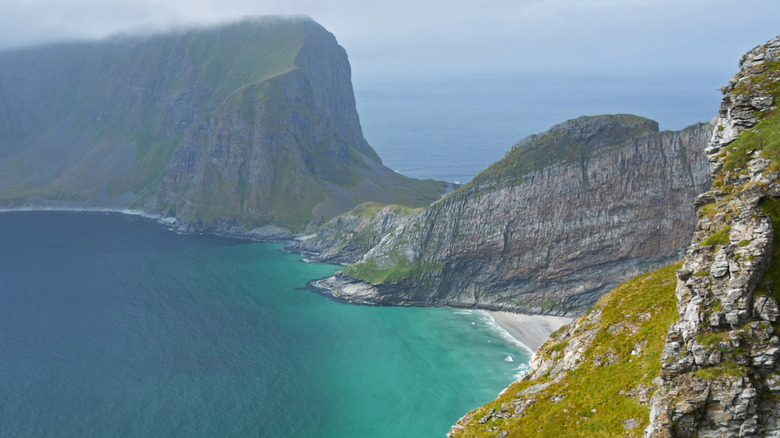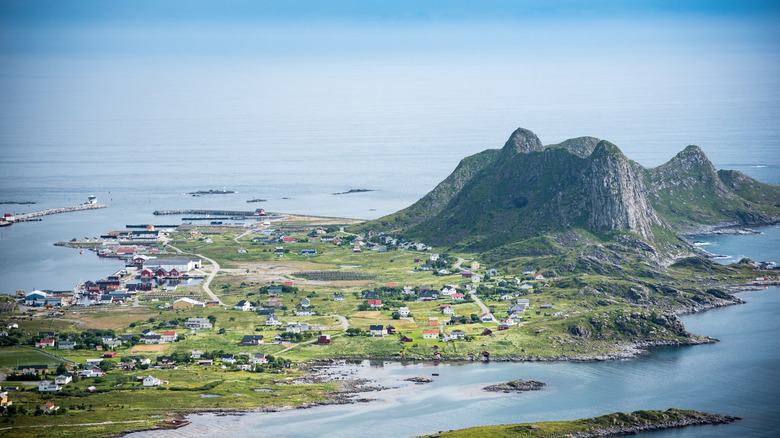What if I told you that you could visit one of the most gorgeous beaches on the planet, but you’d have to pack a parka? Ranking at #18 on the list of The World’s 50 Best Beaches, a curated list that calls on the expertise of thousands of travel pros, Puinn Sand Beach is so objectively beautiful with its dramatic green cliffs and cerulean blue waters that it might even fool you into thinking you were in the Caribbean. Of course, if you were to be standing on this beach, which enjoys temperatures no higher than 58 degrees Fahrenheit in the summer, you would quickly realize you’re not in the tropics. Nope, you’re in the Arctic Circle.
Norway is a country that has so much to offer — even travel expert Rick Steves has gone on record saying he’d live there if he couldn’t live in the US — but it’s not everybody that makes the journey far, far north to the awe-inspiring Lofoten Islands, an archipelago with truly stunning beaches perfect for spending a summer under the midnight sun. Here’s what to know about getting to Puinn Sand Beach and exploring the lands north of the Arctic Circle.
How to get to Værøy and Puinn Sand Beach
After exploring the Norwegian capital of Oslo (make sure you have time to take advantage of Europe’s best subway system), you will need to get a connecting flight to Bodø Airport. Take the 4-hour ferry ride to get to Værøy, or, if you’re short on time, the Lufttransport helicopter takes 25 minutes. From the ferry terminal, it’s a short distance to town where you will find limited accommodations and a local population of under 700 people. Puinn Sand Beach can be visited on a kayak tour or boat safari, but if you want the top-down view, you can take on the Håen mountain hike.
Leaving from the town of Sørland, the 3.5-mile hike takes between 2 to 3 hours. You’ll climb to nearly 2,000 feet in elevation. The Lofoten tourism board rates it as an “easy walk suitable for the whole family” while AllTrails rates it as hard, so you should take care when assessing your own fitness ability compared to the average Norwegian, who tend to be pretty hardcore about their outdoor activities. Your endpoint is the second-highest mountain on the island, but along the way, you will also see the historic eagle houses, where islanders used to sit and wait to catch eagles with their bare hands. See what I was saying about Norwegians being hardcore?




